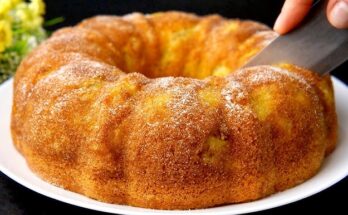French Macaron Recipe: French macarons are more than just cookies—they are tiny bites of Parisian elegance. With their crisp shells, chewy centers, and luscious fillings, they’ve earned their place as one of the world’s most beloved desserts. Walk into a patisserie in Paris, and you’ll see rows of colorful macarons, each flavor more tempting than the last. They may look delicate, but with patience and precision, you can recreate this masterpiece in your own kitchen.
Why Are Macarons So Special?
Unlike typical cookies, macarons are a blend of art and science. They demand accuracy in measurements, timing, and technique. Their delicate structure means one wrong move—overmixing, underbaking, or skipping the resting step—can lead to failure. But when done correctly, the reward is incredible: a dessert that melts in your mouth, looks stunning, and impresses guests every single time.
Essential Ingredients You’ll Need
Dry Ingredients
- Almond Flour – Finely ground almond flour is the backbone of macarons. It provides a nutty flavor and smooth texture. Avoid using almond meal, which is coarser.
- Powdered Sugar – This helps keep the shells light and smooth while adding sweetness.
- Granulated Sugar – Used in the meringue, it stabilizes the egg whites.
Wet Ingredients
- Egg Whites – Room-temperature aged egg whites are crucial for the perfect meringue.
- Cream of Tartar (Optional) – Helps stabilize the meringue for beginners.
Optional Flavor Enhancers and Fillings
- Vanilla extract, cocoa powder, or fruit extracts for flavoring the shells.
- Food coloring gel to create vibrant shells.
- Fillings: buttercream, ganache, or fruit jam depending on your taste.
Tools and Equipment Required
Baking Tools You Must Have
- Mixing bowls
- Fine-mesh sieve
- Electric hand mixer or stand mixer
- Piping bags with round tips
- Silicone baking mats or parchment paper
- Baking trays
- Cooling rack
Alternatives if You Don’t Have Professional Tools
Don’t worry if you don’t own all the fancy equipment. You can use a zip-top bag instead of a piping bag, and parchment paper instead of silicone mats. A regular baking sheet works just fine, as long as you keep your oven temperature stable.
Step-by-Step Guide to Making French Macarons
Step 1 – Preparing the Ingredients
Start by measuring everything accurately. With macarons, even a few grams off can ruin the texture. Separate the egg whites and let them sit at room temperature for at least 24 hours (or up to 48 hours) before using. This process, called aging, helps them whip up better.
Step 2 – Sifting Dry Ingredients
Mix the almond flour and powdered sugar, then sift them at least twice. This ensures no lumps remain and your shells turn out smooth and glossy. Skipping this step often leads to rough, bumpy macarons.
Step 3 – Making the Perfect Meringue
Whip the egg whites until foamy, then slowly add granulated sugar. Beat until you get stiff, glossy peaks. This stage is crucial—undermixed meringue won’t hold shape, and overmixed will collapse. You want peaks that stand tall but slightly curve at the tip.
Step 4 – Folding the Batter (Macaronage)
Now comes one of the trickiest but most important parts: macaronage. Gently fold the sifted dry mixture into the meringue using a spatula. The key is not to overmix or undermix. At first, it will look lumpy, but keep folding in a figure-eight motion until the batter flows like lava. You should be able to lift the spatula and let the batter slowly ribbon back into the bowl, disappearing after about 10–15 seconds. If it spreads too quickly, you’ve overmixed, and your macarons will turn flat. If it’s too thick, you’ll end up with cracked shells. Mastering this step takes practice, so don’t be discouraged if your first batch isn’t perfect.
Step 5 – Piping the Shells
Transfer the batter into a piping bag fitted with a round tip. Hold the piping bag vertically and pipe small, uniform circles onto a lined baking sheet. To ensure even sizing, you can use a macaron template placed under the parchment paper. Once piped, tap the tray firmly against the counter a few times—this removes air bubbles that can cause hollow shells. If any stubborn bubbles remain, use a toothpick to gently pop them.
Step 6 – Resting the Macarons
This step is non-negotiable. Let the piped shells rest at room temperature for 30–60 minutes, or until they form a skin on top. When you lightly touch them, they shouldn’t stick to your finger. Skipping this step usually results in cracked shells. Resting allows the macarons to develop their signature “feet”—the ruffled base that forms during baking. If your kitchen is humid, use a fan to speed up the process.
Step 7 – Baking the Shells
Preheat your oven to 300°F (150°C). Bake the macarons for 14–17 minutes, rotating the tray halfway through for even baking. Keep a close eye on them—they should rise with little feet but not brown on top. Once baked, let them cool completely before removing them from the tray, otherwise, they’ll stick and break apart.
Step 8 – Preparing the Filling
While the shells cool, prepare your filling. The most popular choices are buttercream, chocolate ganache, or fruit jam. For buttercream, whip softened butter with powdered sugar and your desired flavoring. For ganache, heat cream and pour it over chopped chocolate, then stir until smooth. Make sure the filling isn’t too runny, or it will ooze out once sandwiched.
Common Mistakes and How to Avoid Them
Hollow Shells
Hollow macarons are often caused by over-whipped meringue or incorrect oven temperature. To avoid this, whip the egg whites just to stiff peaks and make sure your oven is calibrated correctly.
Cracked Tops
Cracks usually mean the shells didn’t rest long enough before baking, or the oven temperature was too high. Always test the tops before baking—they should be dry to the touch.
No Feet on Macarons
No feet indicate that the batter was overmixed, or the shells didn’t rest properly. Proper macaronage and resting time are essential.
Flavor Variations for French Macarons
Classic Flavors (Vanilla, Chocolate, Pistachio)
- Vanilla: Add a teaspoon of vanilla extract to the batter and pair with vanilla buttercream.
- Chocolate: Mix cocoa powder into the dry ingredients and fill with rich chocolate ganache.
- Pistachio: Use pistachio paste in the buttercream for a nutty twist.
Fruity Flavors (Strawberry, Lemon, Raspberry)
- Strawberry: Add pink gel food coloring to the shells and fill with strawberry jam buttercream.
- Lemon: Add lemon zest to the batter and a lemon curd filling for a tangy kick.
- Raspberry: Bright red shells filled with raspberry jam make a refreshing option.
Unique Gourmet Flavors (Lavender, Rose, Salted Caramel)
- Lavender: Infuse cream with dried lavender before making ganache.
- Rose: Add rose water to the shells or filling for a floral touch.
- Salted Caramel: Pair caramel buttercream with a drizzle of sea salt for a sweet-salty delight.
Tips for Perfect Macarons Every Time
Importance of Aging Egg Whites
Egg whites that have been left uncovered in the fridge for 24–48 hours whip better than fresh ones. They lose some moisture, which makes them more stable when turned into meringue.
Oven Temperature Control
Macarons are sensitive to heat. If your oven runs hot, reduce the temperature slightly and bake for longer. Too much heat causes cracks, while too little prevents feet from forming.
Storage and Shelf Life
Once assembled, macarons taste best after maturing in the fridge for 24 hours. This allows the flavors to meld together. Store them in an airtight container for up to 5 days, or freeze them for up to 2 months.
FAQs about French Macaron Recipe
1. Can I make macarons without almond flour?
Not exactly. Almond flour gives macarons their signature texture. However, some recipes use finely ground pumpkin seeds or sunflower seeds as substitutes for nut allergies.
2. How long should macarons rest before baking?
They should rest for at least 30–60 minutes until a skin forms on top. This step ensures they rise properly with feet.
3. Can I freeze macarons?
Yes! You can freeze macarons in an airtight container for up to 2 months. Just let them thaw in the fridge before serving.
4. Why are my macarons cracked?
Cracked tops usually mean the shells didn’t rest long enough, or your oven was too hot.
5. What’s the best filling for beginners?
Buttercream is the easiest filling for beginners. It’s simple to make, pipe, and holds well inside the shells.
Conclusion
Making French macarons may seem intimidating, but with practice and patience, you can master them at home. Each step, from aging egg whites to carefully folding the batter, plays a vital role in creating that iconic delicate shell and flavorful filling. Whether you stick to classics like vanilla or venture into gourmet options like lavender and salted caramel, macarons are always a crowd-pleaser. The key is to enjoy the process, learn from mistakes, and celebrate your successes—because every batch brings you closer to perfection.



